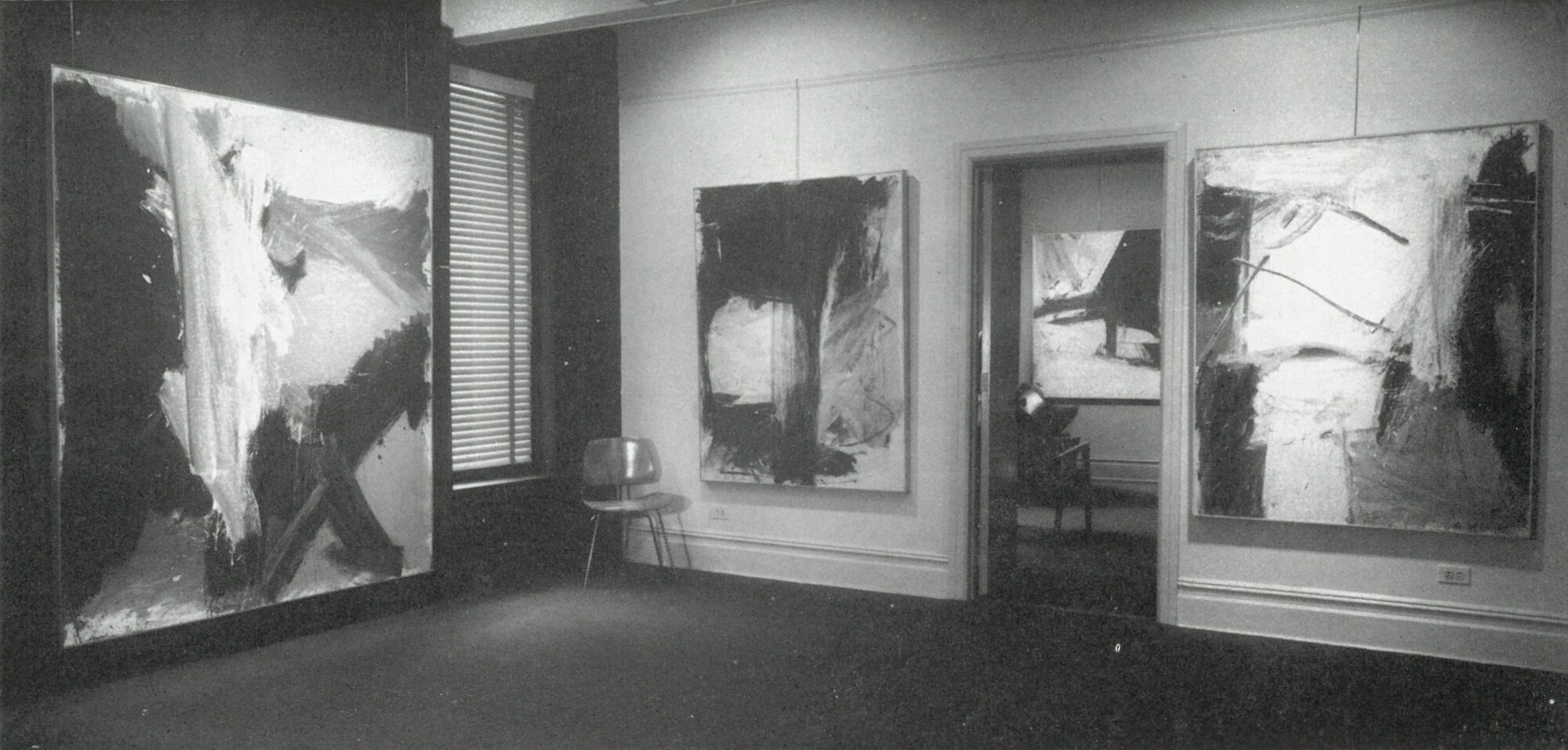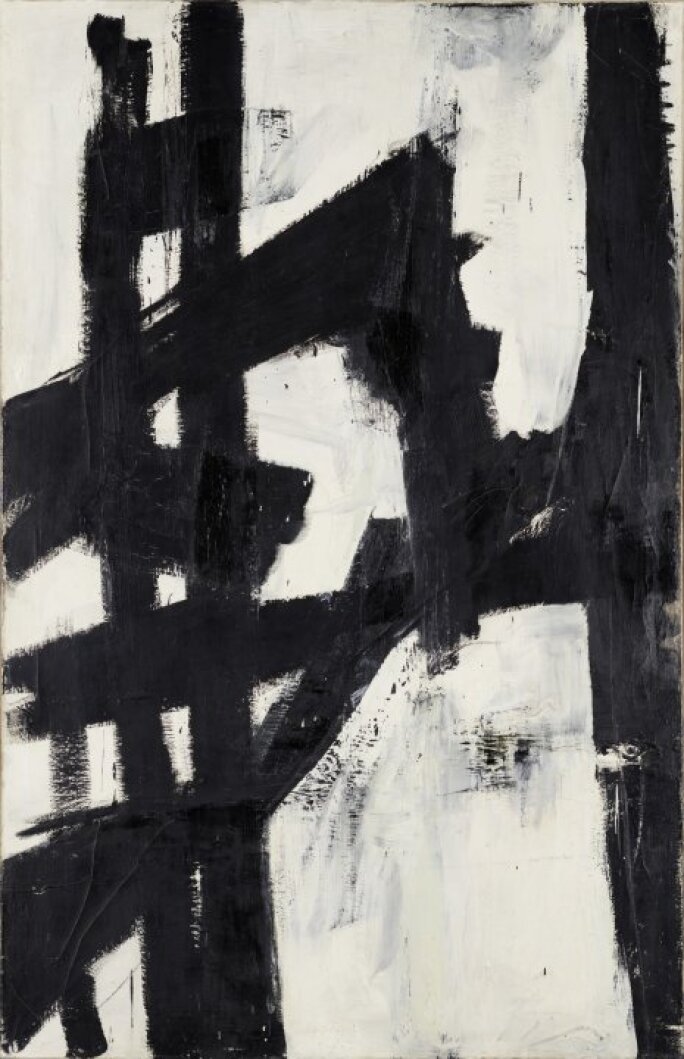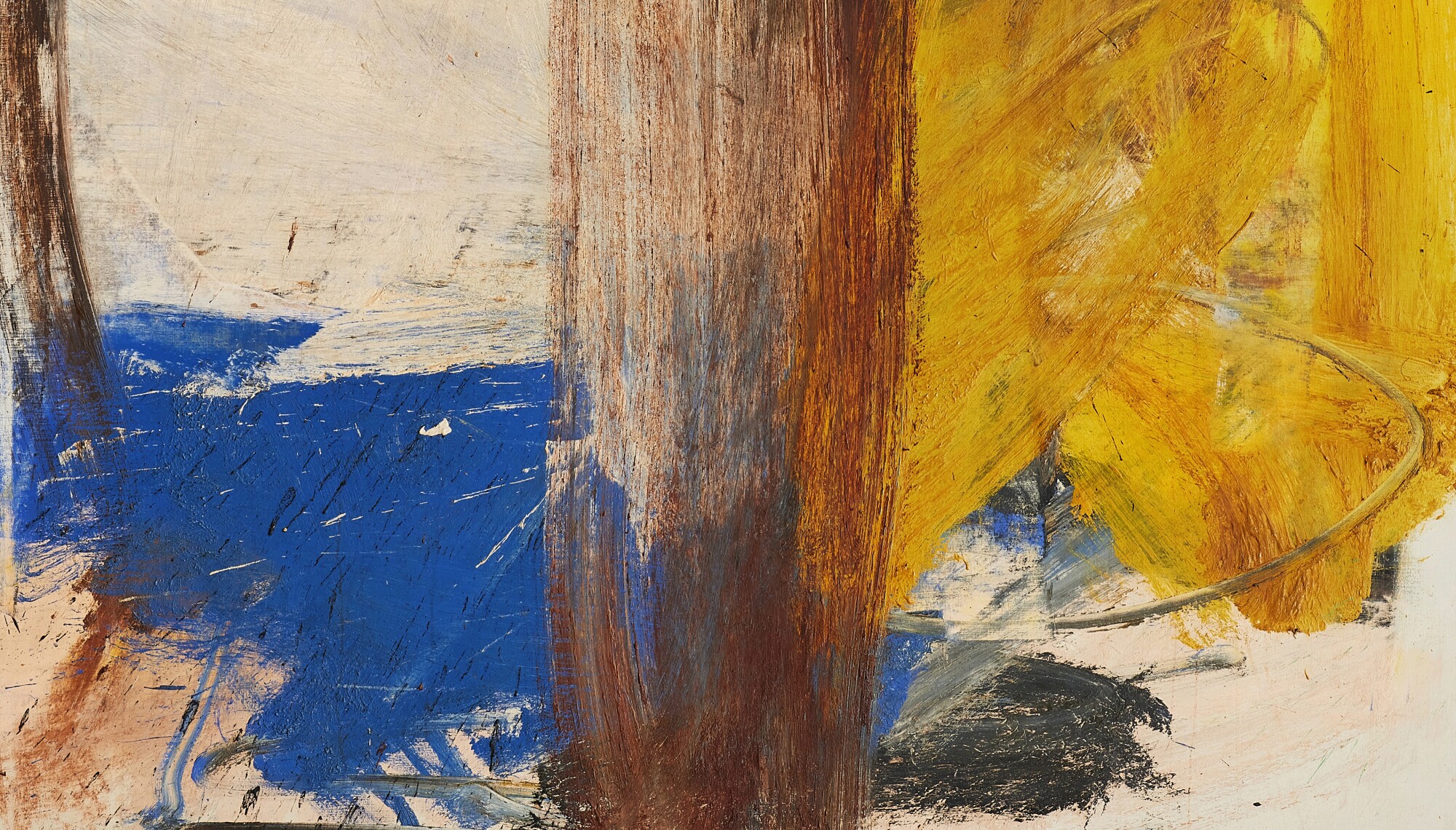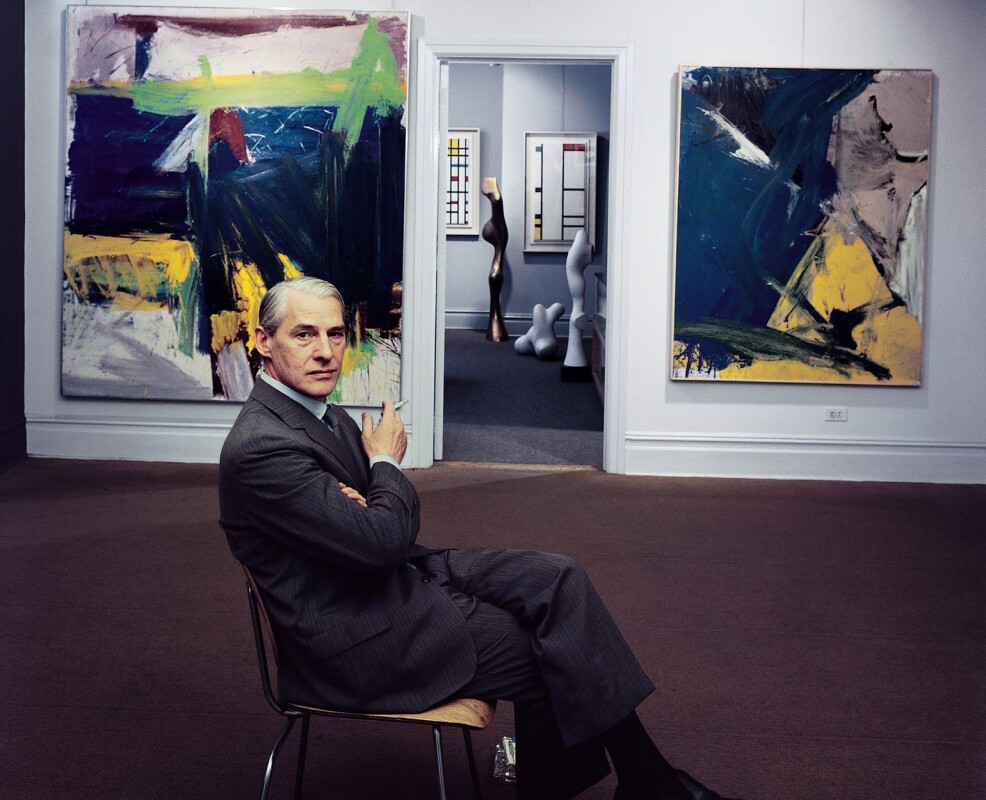
Executed in 1958, Willem de Kooning’s Brown Derby Road emerges from a radical period of transition for the artist during which he produced the most gesturally expressive paintings he had made to date. In 1957, de Kooning began to shuttle frequently between New York City and Long Island, deriving inspiration from the motorways; his paintings of the late 1950s reflect the landscape as seen from a moving car, evoking the subjective vision of blurred horizons, fields, and intersecting roads. These compositions, including the present work, share a palette of yellow, blue, and ochre, and reveal an artist freeing himself from the constrictions of the city as his sweeping brushstrokes become looser and more powerful. Collectively termed the “abstract parkway landscapes” by editor and curator Thomas Hess, these works were first exhibited at Sidney Janis Gallery in 1959—a mere six years after de Kooning had caused a sensation with his series of Woman paintings—and the show was an unqualified triumph: lauded by critics and sold out within the first week. Today, abstract parkway landscapes are held in such prominent collections as the Los Angeles County Museum of Art, Detroit Institute of Arts, Solomon R. Guggenheim Museum, and Museum Boijmans van Beuningen. Having remained in the same private collection for over twenty years, the present work is a rare and emblematic example of de Kooning’s masterful painterly practice.
De Kooning’s Abstract Parkway Landscapes in Prominent Collections
The vigorous gestural swathes of navy, gold, and cream in Brown Derby Road’s composition recall the angular shifts in perspective of the Atlantic coastal landscape de Kooning encountered on his weekend drives. As he explained to David Sylvester, “The pictures [I have] done since the Women, they’re emotions, most of them. Most of them are landscapes and highways and sensations of that, outside the city—with the feeling of going to the city or coming from it… I like New York City. But I love to go out in a car… I’m just crazy about going over the roads and highways … the big embankments and the shoulders of the roads and the curves are flawless—the lawning of it, the grass” (the artist quoted in David Sylvester, “Content is a glimpse...,” Location 1, No. 1, Spring 1963, p. 45-8; reprinted in Harold Rosenberg, De Kooning, New York 1973, p. 206).

The product of a wholly abstract vocabulary, Brown Derby Road embraces the historical tradition of pastoral landscape in a modern dialect. De Kooning abridges a planar abstraction of space that seems to suggest the sun and sea as it whizzes past a car window. His broad, open strokes of paint, though purely formal and nonfigurative, nevertheless suggest a representational perspective through their geometric angles and balanced compositional symmetry across the vertical axis. Shifting away from the agitated, heavily worked surfaces of his earlier Women, works like the present show the artist liberating his gesture and moving toward the more fluid style of his later work. Here, de Kooning’s expansive, muscular brushstrokes recall the powerful thrusts of his contemporary Franz Kline, his pastoral composition as redolent of the countryside as Kline’s monochromes are of Manhattan’s energy.
This evocative arrangement is matched by a palette of deep blue, sunny yellow, and a particular earthy ochre described by Carter Ratcliff as reminiscent of “raw, bulldozed earth and a quality of autumnal North Atlantic light—afternoon light filtered through leaves that have turned” (Carter Ratcliff, “New World Order,” Artforum, Vol. 33, No. 3, November 1994, p. 77). The inspiration of his surroundings is unmistakable in the present work, as a sense of sunlight emanates from its surface. Creating a vortex of organic colors with extraordinary bravura, de Kooning conjures the experiential atmosphere of landscape in resolutely abstract terms.

As Henry Geldzahler observed, the parkway landscapes are "packed with shapes, allusions, actions and counteractions, they pile ambiguity on ambiguity; sometimes, it would seem, they are painted at lightning speed, at others in a more relaxed, contour-loving gesture” (Exh. Cat., New York, Gagosian Gallery, Willem de Kooning: Abstract Landscapes, 1955-1963, 1987, n.p.). The selective palette, muscular gestures and balanced configuration emphasize the texture of paint and the artist's luxuriant celebration of his medium, marking Brown Derby Road as an exemplar from this pivotal period in de Kooning’s inimitable career.





